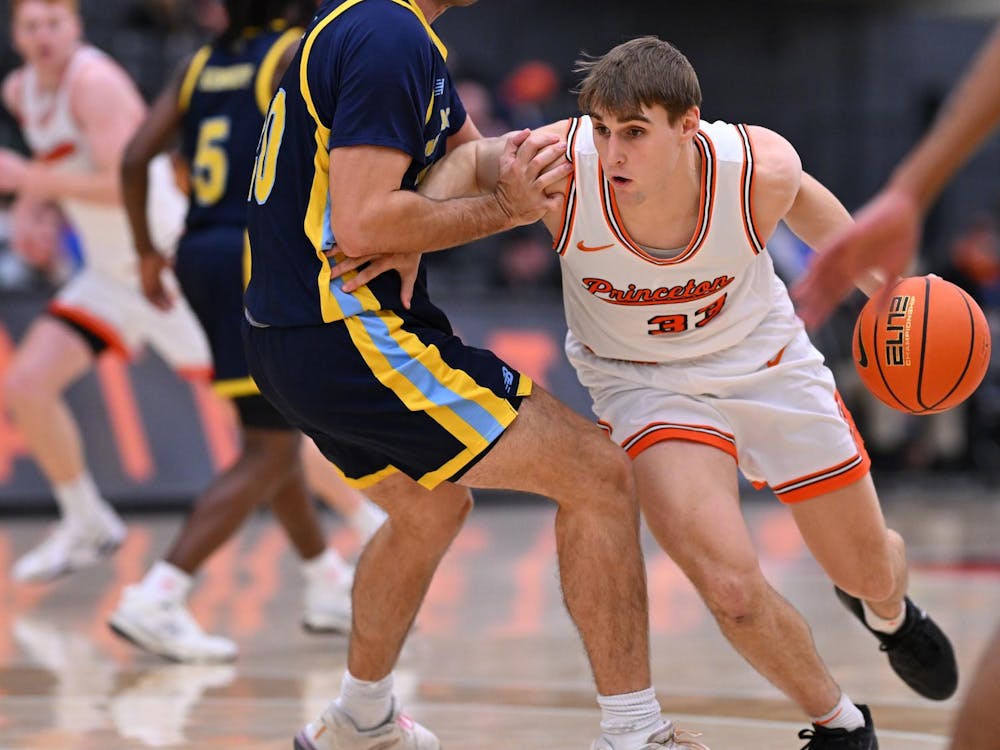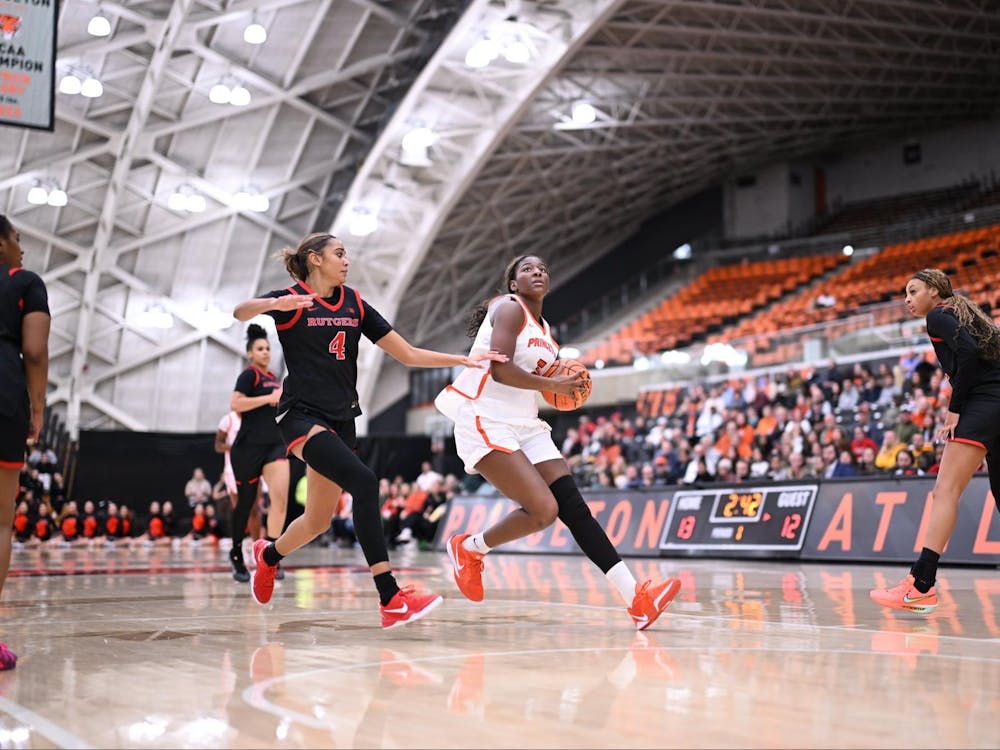Every time a man in front of the crease catches a quick feed and redirects it into the back of the net, the sport of lacrosse reaffirms its claim to be the fastest sport on two feet. It's one of the most exciting plays in men's lacrosse, and this weekend, senior attackman Jason Doneger was in all the right places, literally going toe to toe with goalies — highly successfully, too, judging by his nine-goal weekend.
But how do the Tigers (3-6 overall, 2-1 Ivy League) put together an offense that gives Doneger the chance to make his spectacular plays?
A large part of Princeton's offense starts far from the goal in what is called a "high wing" offense. A midfielder, or sometimes attackman, will start with the ball near midfield and look to dodge and drive down the "wing," or outside, of the field. By beating his man and creating a temporary man-up advantage, the player creates several possible outcomes that can result in a goal.
"The idea in lacrosse is to [eventually] get it down to a two-on-one," men's lacrosse head coach Bill Tierney said.
To get as close as possible to that goal, a dodging player sweeping down from near midfield finds himself faced with an important decision once he's beaten his man: shoot or pass?
It's a difficult choice to make sometimes, and it takes a tremendous amount of experience to make it well.
"That [decision] is probably something that makes our midfielders take a little longer time to develop," Tierney said. He noted that last year, then-freshman Scott Sowanick was unusually adept at making that decision, but "other ones just haven't quite gotten it down on when and how to make that decision."
Indeed, while the high wing offense is common among teams, Tierney's tendency to let his players make decisions on the field has both advantages and disadvantages. It makes the Tiger offense a little less "robotic," Tierney said, but he also admitted that it can to turn other offensive players into spectators who watch the dodging player instead of moving and cutting to get open.

That's an issue that Princeton has been struggling with for much of this season, but the problem seems to be melting away as Doneger and the Tigers heat up.
Not surprisingly, the six foot, one inch, 250-pound senior always draws the closest defensive coverage from an opponent's defense. Sometimes, a defender will not slide off Doneger even if another of his fellow defenders gets beat. But Doneger's effectiveness both with and without the ball is a tremendous help to Princeton's offense.
"If you put [Doneger] in the middle ... then they can't slide from him, which means you open up some other guys to get some dodging-type shots," Tierney said. "If you take him out of the middle and put him in the other spot and they're going stay on him, that can create some other opportunities in the middle for some other guys."
Put it all together, and the objective of the high-wing offense, like any other, is to have a man beat a defender and create a temporary advantage in numbers. If this happens, and a defender slides away from a man near the goal — like Doneger — it can open up another man who can catch a pass for a relatively easy goal. If there's no slide, then the man can either wind up for a shot or simply pass the ball down the side in hopes of another chance.
Harder than it looks

But it's rarely that easy for Doneger. Sometimes, a shot might not be the best option, but Doneger or another man might still be covered. In that case, a pinpoint feed to whoever is in a good position to shoot is key.
Tierney noted the importance of feeds in Doneger's strong weekend performances on the crease.
"Certainly the ball was getting in and out of his stick better, which means the feeds were better," Tierney said. "We've been talking all year long about guys throwing good feeds and not [just] any feed."
Tierney said he and his coaching staff hadn't made any major changes to the way his team approached offensive play, but it certainly seems that whatever they did do, the Tigers responded well over the weekend.
"Last week we put in a little bit more of a freelance play thing [to] let the kids play a little bit and just put them in situations to recognize simple things like getting out of each other's way," deciding when to take shots and when to move the ball, creating off-ball movement and dodging from midfield to "see what happens," Tierney said.
It's clear that Princeton has responded well to this more natural style of play, and it couldn't have come at a better time. The Tigers play Cornell in Ithaca, N.Y., this Saturday with the Ivy League title — and an NCAA tournament bid — on the line. If Doneger, Tierney and their fellow Tigers can put together all the pieces of their offense to create as lethal a scoring machine as they did last weekend, then Princeton stands more than a good chance of fighting for Ivy supremacy.







